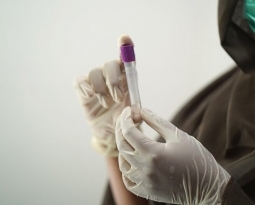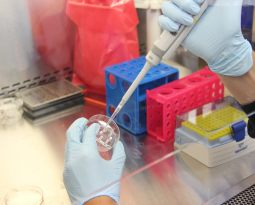South Dakota Patent of the Month – December 2020
The U.S. is the third largest country in the world, and with it comes a lot of farmland. In the U.S. alone there are over 900 million acres, which makes up around 40% of the country. In specialized industries, such as farming and agriculture, there is a need for equally specialized equipment. Raven Industries, Inc. noticed there was a problem controlling the position of agricultural vehicle implements in automated farming equipment, such as harvester heads and sprayer booms and nozzles. Since the ground can be uneven, varying from meter to meter, and is also covered by the canopy of crops, it’s hard to make reliable measurements between the implement and the ground. There are some current automated systems with sensors, however, the sensors aren’t always accurate when detecting ground and crop distances, especially if the crop is spaced out or dry. If measurements are incorrect and agricultural products are sprayed onto crops below their canopy, it can lower their effectiveness. Equipment can also become damaged from too much movement when trying to adjust itself from sensor data. So, Raven Industries, Inc. developed an implement position control system to help with these issues.
The system is automated and measures multiple distances with many sensors that have both ground and canopy sensing abilities. These measurements are further assessed with confidence values and the one with the highest confidence value is chosen as the position of the implement. Measurements with high confidence values are chosen over measurements with lower ones since lower ones result in inconsistent measurements due to gaps in the canopy, dry crops, etc. When there are changes in ground and canopy distances, they’re compared to base measurements and the system changes the implement position accordingly. The addition of more sensors and more calculations based on distance comparisons and high confidence values means the implement control is more accurate, reliable, and the equipment is less likely to be damaged due to incorrect measurements.
Are you adapting existing technology for a new application? Did you know your development work could be eligible for the R&D Tax Credit and you can receive up to 14% back on your expenses? Even if your development isn’t successful your work may still qualify for R&D credits (i.e. you don’t need to have a patent to qualify). To find out more, please contact a Swanson Reed R&D Specialist today or check out our free online eligibility test.
Who We Are:
Swanson Reed is one of the U.S.’ largest Specialist R&D tax advisory firms. We manage all facets of the R&D tax credit program, from claim preparation and audit compliance to claim disputes.
Swanson Reed regularly hosts free webinars and provides free IRS CE and CPE credits for CPAs. For more information please visit us at www.swansonreed.com/webinars or contact your usual Swanson Reed representative.

















